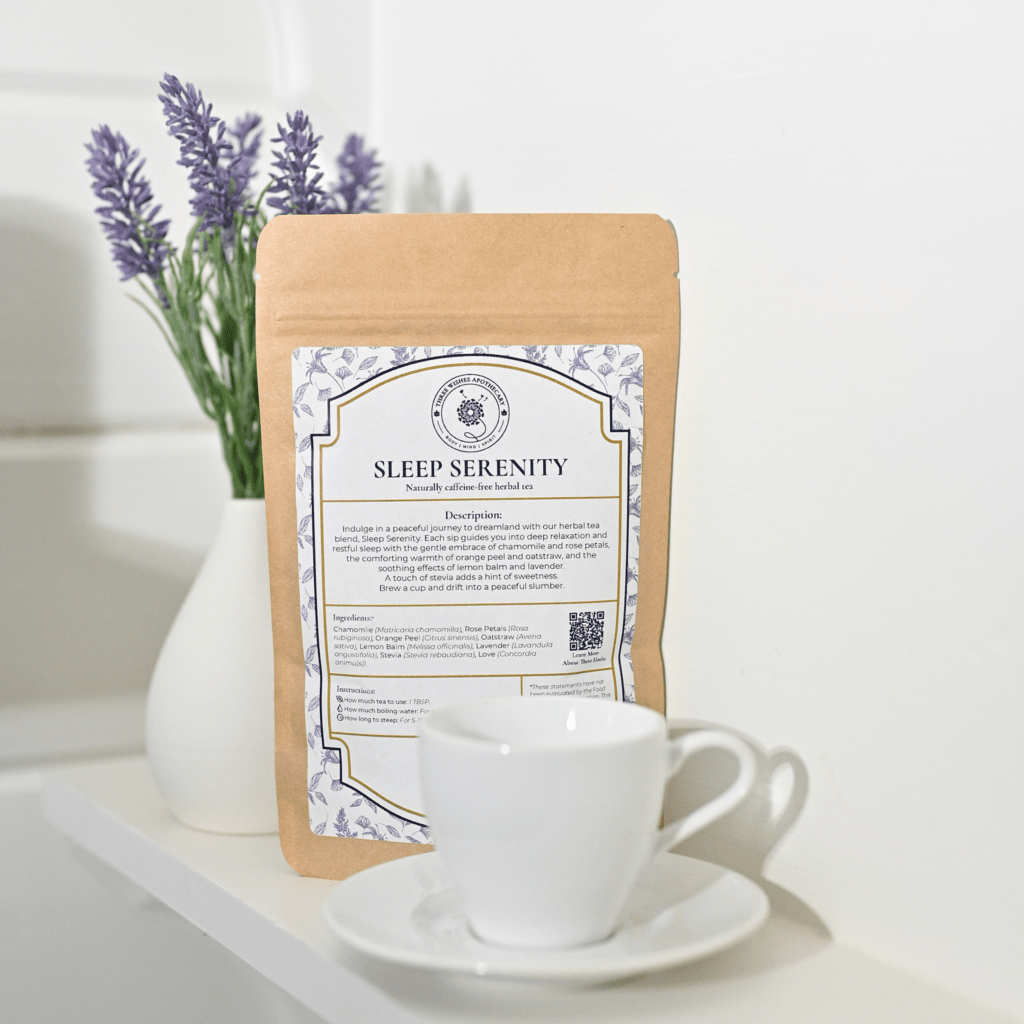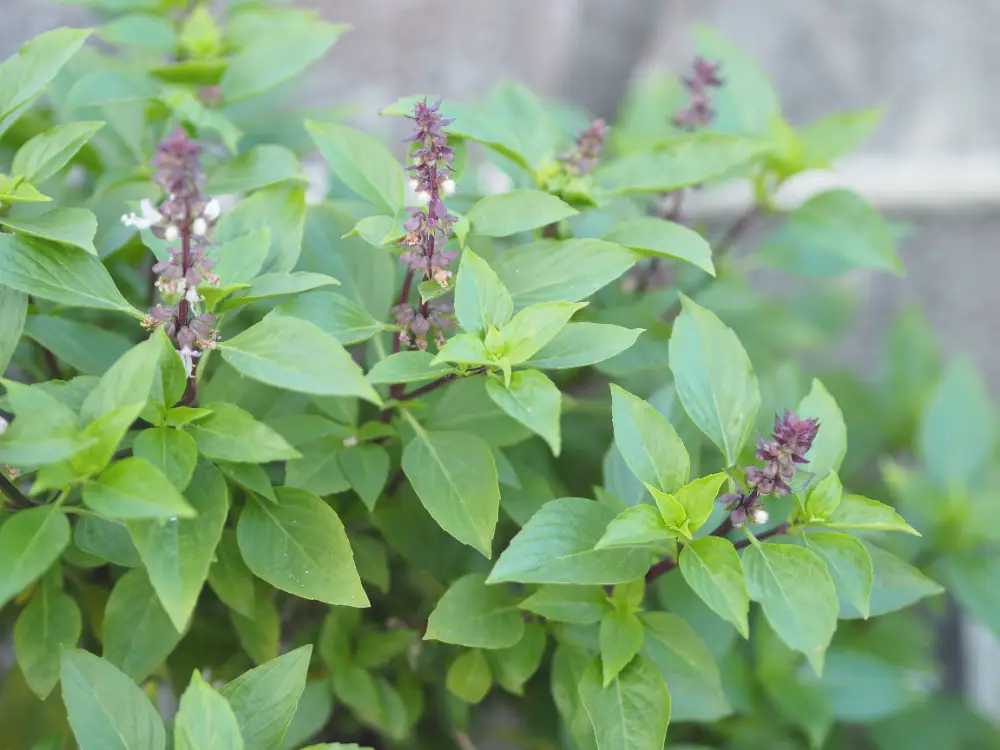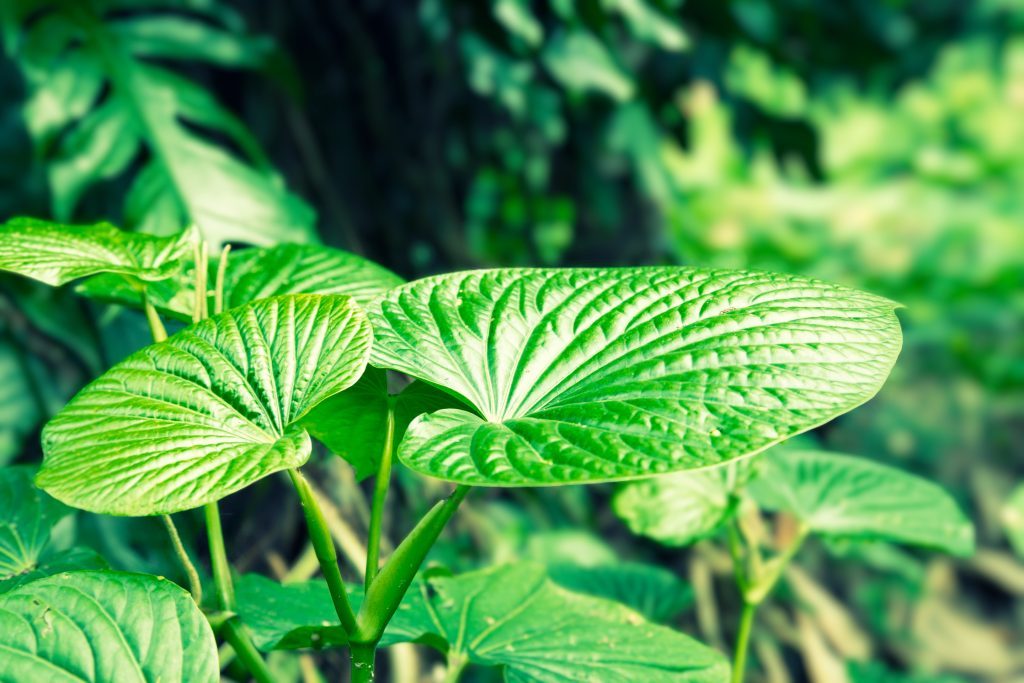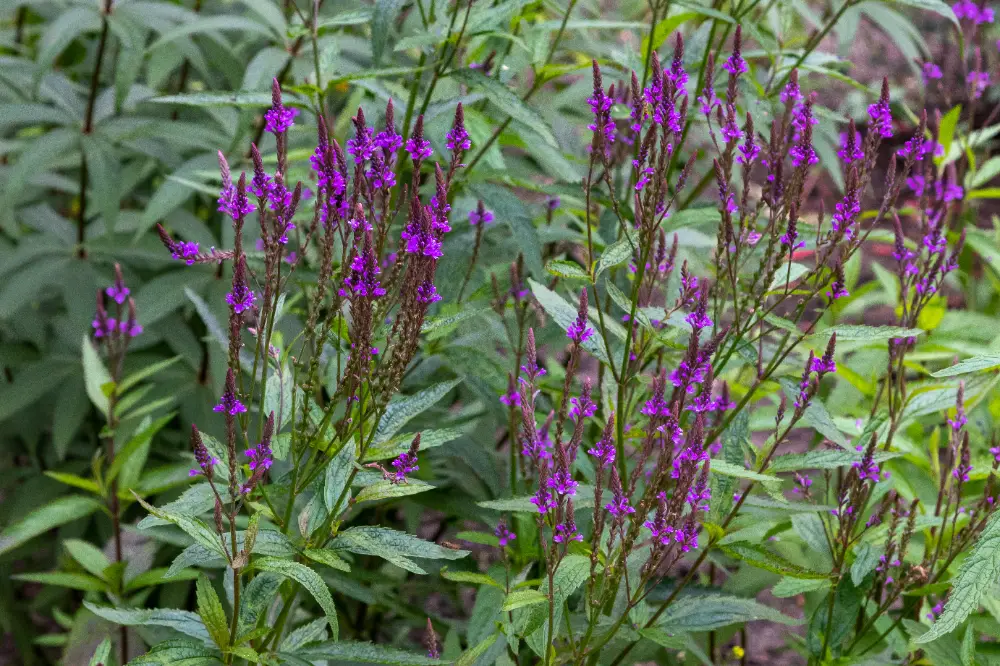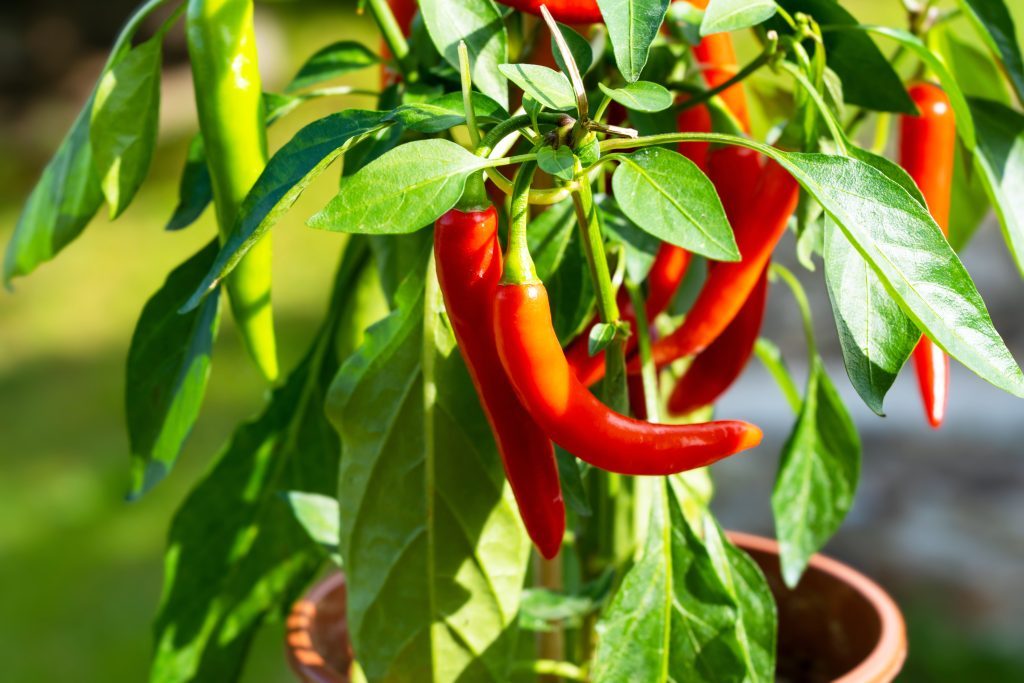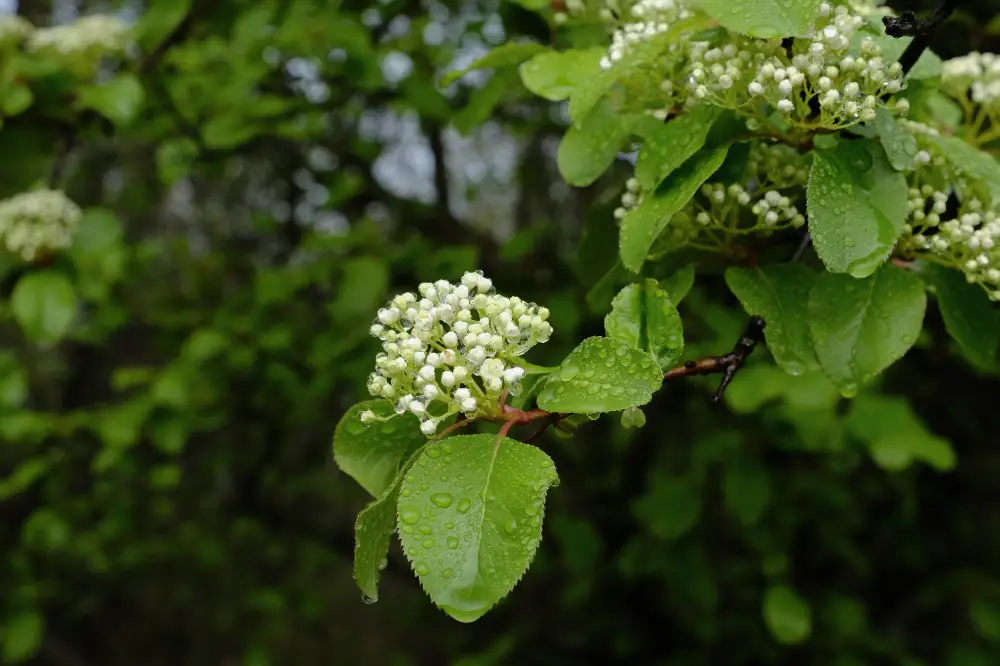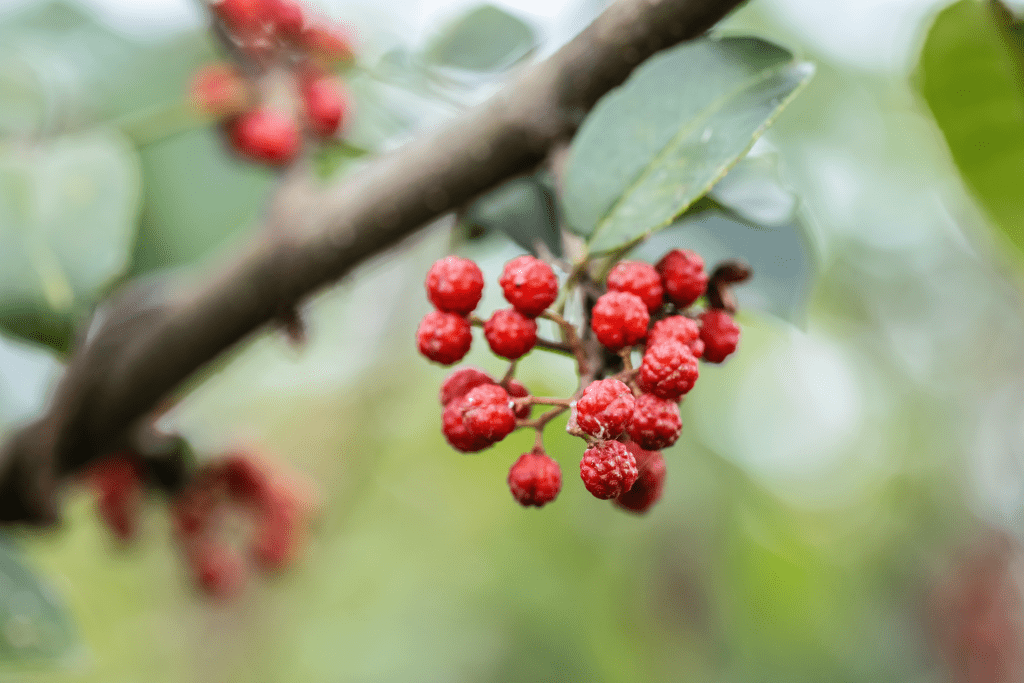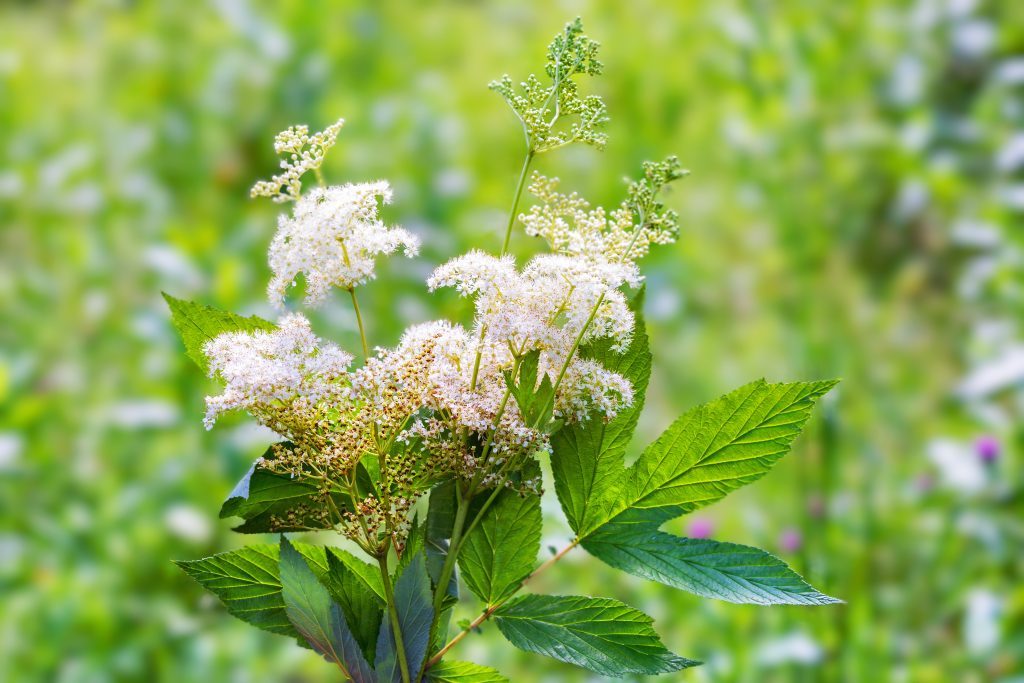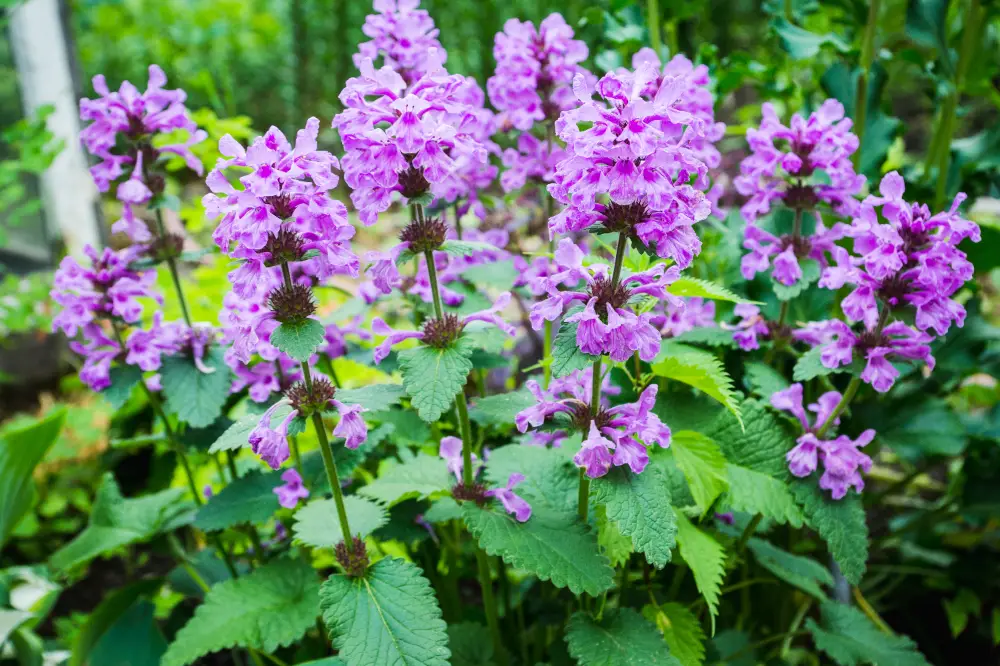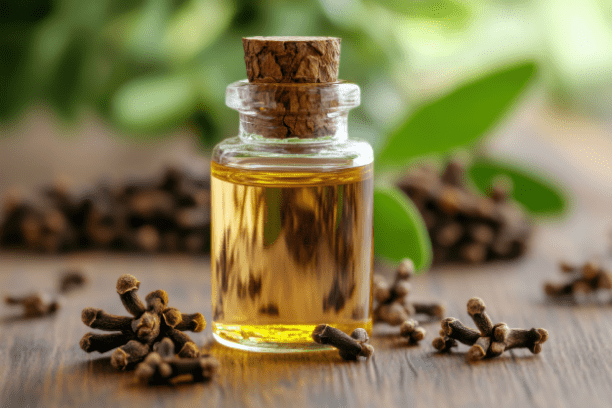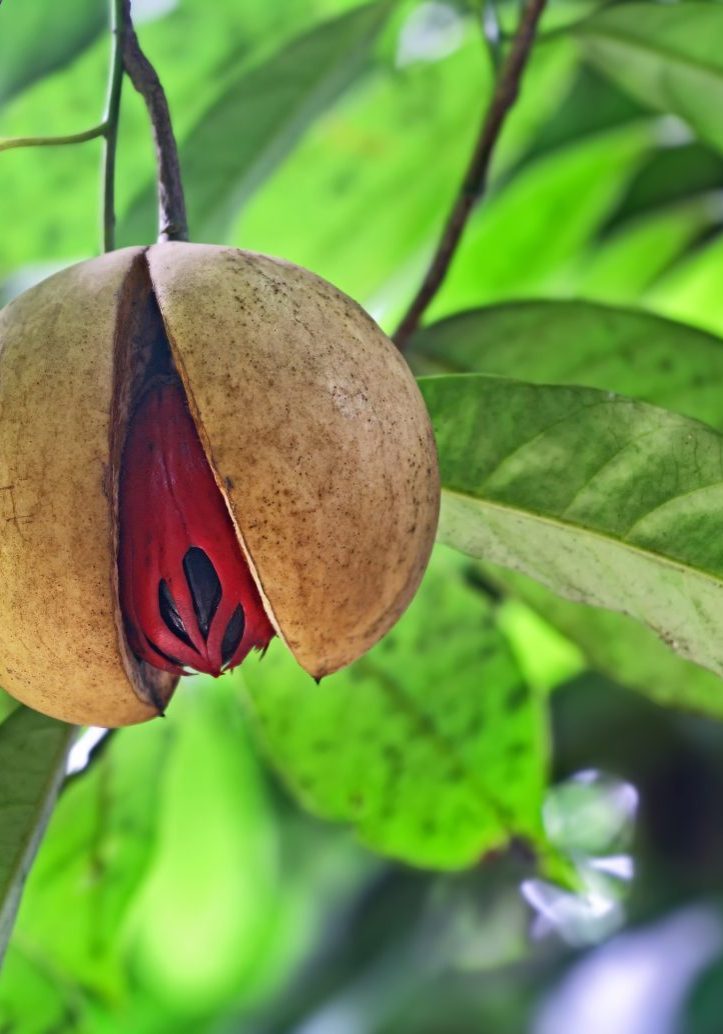
Nutmeg
Myristica fragrans
Myristicaceae (Nutmeg family)
Aromatic Healer of Warmth, Clarity, and Digestive Comfort
Other names:
Jaiphal, Musk Seed
Superpower
The ultimate cozy spice! Warming up your belly, calming your mind, and clearing your head—nutmeg keeps you balanced and comforted, like a hug in spice form!
Uses
Used in Ayurveda and Traditional Chinese Medicine to support digestion, treat nausea, and soothe abdominal discomfort.
Traditionally, nutmeg was used to promote sleep, calm the mind, and improve mood.
Applied topically, it was used to relieve joint pain and muscle soreness.
Current Uses:
-
- Nutmeg is widely used in cooking for its aromatic and warming properties.
- It continues to be valued for digestive health, aiding in the relief of indigestion, bloating, and nausea.
- Nutmeg is commonly used in herbal preparations to promote relaxation, support sleep, and enhance mental clarity.
Cautions
Toxicity: Nutmeg contains myristicin, which can be toxic in large amounts, causing symptoms such as nausea, vomiting, hallucinations, and dizziness. Always use nutmeg in moderation.
Contraindications: Avoid using nutmeg during pregnancy, as high doses may stimulate the uterus. Individuals with liver conditions should use caution.
Interactions: There are no known interactions, but excessive use can be harmful, so consult a healthcare provider if in doubt.
Known Chemical Constituents
Butyrin: Contributes to nutmeg’s medicinal properties, particularly in promoting digestion.
Volatile Oils:
-
- Alpha-pinene, Beta-pinene, Alpha-terpinene, Beta-terpinene, Myristicin, Elincin, Safrole: These compounds are responsible for nutmeg’s aromatic, stimulating, and warming effects.
Phenolic Compounds:
-
- Eugenol, Isoeugenol: Provide anti-inflammatory and antimicrobial benefits.
Lignans:
-
- Support antioxidant activity and overall health.
Tannins:
-
- Astringent compounds that help tone tissues and reduce inflammation.
Terpenes:
-
- Pinene, Camphene: Promote circulation and respiratory health.
Botanical Description
Habitat: Native to the Banda Islands of Indonesia, Myristica fragrans thrives in tropical climates, particularly in well-drained, sandy soils with plenty of rainfall.
Leaves: Dark green, lance-shaped, and glossy, the leaves are aromatic when crushed and arranged alternately on the branches.
Stems: The tree can grow up to 30-60 feet tall, with a smooth, greyish-brown bark.
Flowers: Small, pale yellow bell-shaped flowers that are fragrant and typically unisexual.
Fruit: The fruit is a large, fleshy, yellowish drupe that splits open when ripe, revealing a seed covered by a bright red aril (mace). The seed itself is the nutmeg spice.
Fun Facts
Nutmeg has a rich history as one of the most sought-after spices during the spice trade, and it was once considered more valuable than gold in certain parts of the world.
Parts Used
Seed, Mace
Harvest
Timing:
-
- Seeds: Harvested when the fruit splits open, revealing the seed (nutmeg) and the bright red aril (mace).
Method:
-
- The fruit is collected and split open to separate the seed and aril. The seed is then dried for several weeks before use.
Storage:
-
- Nutmeg seeds should be stored in an airtight container, away from direct sunlight and moisture, to preserve their potency.
Preparations
Teas/Infusions: Nutmeg is used in teas to support digestion, relieve nausea, and promote relaxation.
Tinctures: Taken to soothe digestive discomfort, ease bloating, and calm the nervous system.
Topical Oils: Nutmeg oil is applied for joint pain, muscle soreness, and as a warming agent to stimulate circulation.
Culinary Uses: Nutmeg is a popular spice used in both sweet and savory dishes, enhancing the flavor of desserts like pies and custards, as well as savory soups, stews, and sauces.
Sacred Rituals
Clarity Ritual: Burn a small amount of nutmeg powder in a fire-safe dish or add it to a candle to enhance mental clarity and focus during meditation or work.
Affirmations
“I am protected and abundant. Like the nutmeg seed, I am blessed with divine guidance and prosperity.”
Spiritual Associations
Nutmeg is often associated with clarity and protection. It is used in spiritual rituals to enhance focus and mental clarity, and it’s believed to ward off negative energies, bringing warmth and positivity to both the mind and environment.
Functions
An analgesic is a substance that relieves pain by reducing the perception of pain signals or alleviating discomfort without causing a loss of consciousness.
Anti-emeticA substance or agent that helps prevent or reduce nausea and vomiting.
AntispasmodicA substance or agent that helps relieve or prevent involuntary muscle spasms, cramps, or contractions in smooth or skeletal muscles.
CarminativeA substance or agent that helps relieve gas, bloating, and discomfort in the digestive system by promoting the expulsion of gas and soothing the digestive tract.
Circulatory stimulantA substance or agent that enhances blood flow, oxygenation, and nutrient delivery throughout the body, often by dilating blood vessels or improving cardiovascular efficiency.
Digestive & Elimination HealthThe overall well-being and optimal functioning of the digestive system, which includes the gastrointestinal tract, liver, pancreas, and other supporting organs. It encompasses the processes of breaking down food, absorbing nutrients, and eliminating waste, as well as maintaining a healthy balance of gut microbiota.
Pain ManagementPain management refers to interventions or therapies designed to reduce, alleviate, or control pain, improving comfort and quality of life.
RelaxationRefers to the process of calming the mind and body, reducing stress, and alleviating tension to achieve a state of tranquility and ease.

